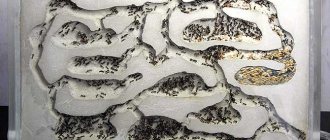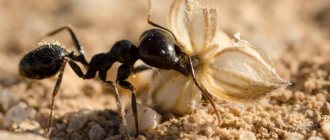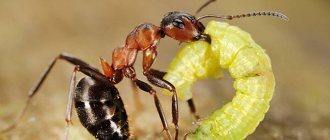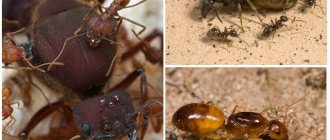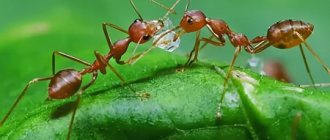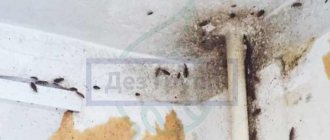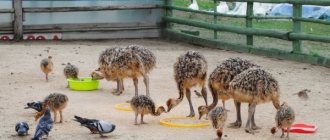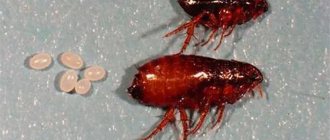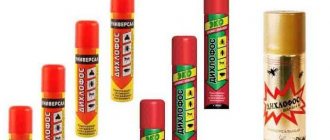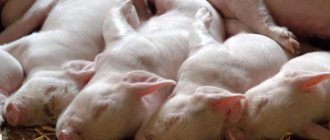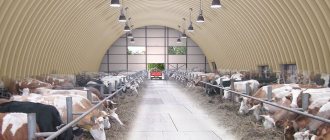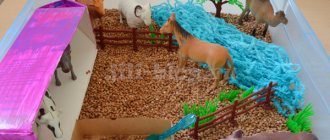What is an ant farm?
An ant farm is a home anthill, which is a container filled with a special gel, sand or other filler. In it you can easily observe everything that happens inside the ant family.
Scientifically, an ant farm is called a “formicarium”. For the Russian market this product is still quite exotic. But gradually formicaria are gaining well-deserved popularity.
An ant colony is like an exotic pet. There are no special problems in its maintenance, and observing the inhabitants of the anthill is a very exciting activity. At the same time, you get the opportunity to see the development of the colony from the very beginning.
Recently, formicariums have begun to be purchased for offices. Some might want to use it on their desk, since farms are compact and don’t take up much space. And someone buys large farms for the hall or for the boss’s office.
Many people give ant farms as an original gift. Ants are social insects, so you can watch them for hours, they are constantly doing something and interacting with each other.
Children will simply love the ant farm! They are interested in what happens inside the anthill and how these insects develop. They have the opportunity to grow a huge family from a small colony of 20–25 ants. The formicarium also allows children to get to know nature better and, at least for a while, take their mind off gadgets. While looking after the ants, they learn a lot about the fascinating world of these insects, which have been living on our planet for several million years. And for adults, such observation is the best way to disconnect from everyday worries for at least an hour and let the body relax.
Inhabitants of the formicarium
There are a huge number of species of ants, completely different from each other. For example, there is such an amazing species as Amazon ants, which rob the anthills of other species and drag away the larvae from there. Subsequently, the captive ants become their slaves and look after the Amazons.
There are leaf-cutter ants that live inside the mycelium, which they grow themselves. Their jaws are very well adapted for cutting leaves into small pieces and carrying them to the mycelium, and then building a dwelling from it, as well as feeding on it.
There are real giants in the world of ants, reaching a length of 4 centimeters.
Ants are mainly divided into hunters and gatherers. Hunters need protein food and carbohydrates; they are predators and hunt insects. It is very interesting to watch how ants use their antennae to chase prey by smell. When one of the ants finds syrup or fruit, on the way back to the anthill, it marks the road with its abdomen, which allows its fellows to quickly find their way to food. All these interesting points will be clearly visible to you in your home farm.
Gatherer ants differ from hunters in the peculiarities of their content. They feed mainly on what they find. Mostly these are plant seeds (poppy, rapeseed, millet). They will also not refuse protein foods. They can eat dead insects or the same boiled chicken (if we talk about a home ant farm). They do not hunt insects, they only defend themselves. But these ants have a very interesting internal structure of the anthill. There are food storage chambers (warehouses where they store seeds for a long time), birth rooms, dining rooms (where they bring seeds, soften them with moisture and eat them), rooms for caring for the young (in these rooms the ants care for and feed the larvae). And all the processes that occur in the formicarium can be observed with your own eyes!
As a rule, insects within the same family are divided into castes: scouts, workers, nurse ants, soldiers and queen. Almost every species has scouts; they make up a small percentage of the total population of the anthill. Their task is to explore unfamiliar territories and look for new food sources. Workers are the main hard workers of the colony; they build, transport food, sort warehouses, and clean the anthill. Soldiers differ from the rest in their larger size, have a large head and powerful jaws. The nannies practically do not leave the young; they feed the larvae and the queen itself.
The queen is the No. 1 person in the colony. All the inhabitants of the anthill are born from the same womb, that is, they are all brothers. The task of the uterus is only to give birth to new ants. She doesn't even get food herself. There are some species in whose colonies several queens can exist.
Each anthill and its inhabitants have their own unique smell, so even ants of the same species, but from different anthills, will be at enmity with each other.
Beginners should remember a few simple rules:
- Do not place the farm in direct sunlight.
- Do not shake the formicarium or move the ants unless necessary.
- Do not forget to feed the ants correctly and on time. You can pamper arthropods with sweet syrup or seeds (a universal food for any species).
- Maintain your farm regularly. Without proper care, food, or high humidity, the colony will shrink significantly.
- Don't forget about cleaning your home. The compartments accumulate food scraps, garbage and other waste. Beginners are advised to use tweezers when cleaning, and place the ants in test tubes or separate containers.
- Move the ants carefully; the correct option would be to use an exhauster (a device for delicately moving small insects). Some species of these insects are capable of spraying poison.
By following these rules, you will ensure your small pets a long and comfortable existence.
How to care for an ant farm?
An integral part of the formicarium is the arena, where, in essence, the aboveground life of the colony occurs. Here the ants find food (of course, if the owners put it there in a timely manner), water, and a landfill is organized here. The farthest corner of the arena is usually reserved for it, where the garbage is folded into a neat pile.
Comfortable conditions for the inhabitants of the formicarium
In the formicarium it is necessary to create special conditions, a microclimate that is comfortable for ants. There are few of them (conditions). Firstly, you need to maintain the temperature at 22-26° C, and secondly, the air humidity should be in the region of 70-90%. Ventilation is also necessary.
Feeding the ants
The colony needs two types of food: protein for the larvae and carbohydrates for the adult ants. Forage insects (crickets, mealworms, etc.) are usually used as protein food, which can now be purchased at almost any pet store. But if you couldn’t get the insects, it doesn’t matter! Ants will happily eat veal or chicken, egg whites, and fresh or boiled shrimp. The only thing worth cautioning against is not to feed the inhabitants of the formicarium with street insects - they can be poisoned by chemicals.
With carbohydrates, everything is generally simple. Even ordinary sugar, which needs to be diluted with water, will do. You can also give fructose or glucose. Ants also eat fresh fruits (grapes, pears, apples, oranges, tangerines) with great appetite. As a rule, they will not refuse marmalade or marshmallows (but it is still better to refrain from industrial sweets). There are also types of ants that feed mainly on seeds (for example, Messor structor). They are also a bit of a hassle - a pack of canary food will last them for a whole year. In general, there is always something to feed small pets in the house.
Remember that “food” should always be fresh and in sufficient quantities - the inhabitants of the formicarium will figure out for themselves how much and when to eat.
And don’t let the apparent difficulties scare you at the beginning of your journey, in reality there are not many of them. After all, an ant colony is a large organism with excellent self-regulation. If you inadvertently forgot to moisten the formicarium, the insects will fetch water from the drinking bowl and do it themselves. If they fail to feed, they will start using the prepared supplies.
FAQ
- Why can't you catch ants with your hands?
Small insects are easy to damage. Injured ants soon die.
- What types of ants are suitable for gel ant colonies?
Questions and answers
Which type should I choose for my first move in?
Representatives from the myrmicine family are perfect for beginners. These are the most evolutionarily developed groups. It is interesting to watch them - insects have a clear classification according to caste and profession.
When should you bring food?
Hungry representatives of the insect family are almost always waiting for you. First of all, food goes to the queen and larvae, and then to simple workers. To correctly calculate the portion, monitor their movements - when the ants stop showing interest in food and transferring it to the queen, the meal is over. Untouched food can be removed.
I was bitten! What to do?
For ant farms, they offer insects with poison that is not very toxic, so there is no threat to health. Most often, formic acid causes redness on the skin or burning on the mucous membrane if it gets into the eyes. For calming, a baby cream or soothing lotion is suitable.
I am newbie! How should I care for my formicarium so that the ants live long?
A queen ant can live more than 20 years, while simple workers can live for 2-3 years. If you provide comfortable conditions for the queen, you can enjoy your artificial anthill for almost a quarter of a century.
One ant died on the farm - is it contagious?
During relocation, insects experience stress, so the death of 1-2 individuals is not a serious disease. Also, workers often die from old age and from overpopulation.
Several ants have escaped, what should I do: look for them or forget them?
There are often scouts in the colony who go out to inspect the area. But to create a full-fledged ant family, they will need a queen. If such brave souls do not return after 3-4 days, then they have already died.
How to choose the right ant farm?
There are many artificial anthills! There are for long-term maintenance (gypsum, sand, vertical and horizontal) and for short-term maintenance (helium).
Beginners are advised to first purchase an acrylic farm to try their hand at insects and get to know them better. Such formicaria are designed for 1-1.5 years.
In the future, the colony will grow and additional passages will need to be connected. For long-term keeping of ants, you can choose a convenient and practical anthill with built-in compartments, a well-thought-out humidification system and a large arena.
How to properly moisturize a formicarium
To ensure a comfortable life for ants, it is necessary to maintain a certain level of humidity in their home. In the formicariums offered by ANTKingdom, special humidification chambers are provided for this purpose.
If there is a lack of moisture in the living chambers, ants begin to accumulate near the drinking bowls and humidifiers in the arena. The main thing is to pay attention to this in time and restore the required humidity level as quickly as possible.
Monitoring humidity levels based on insect behavior is very difficult. This problem can be solved using a hygrometer - a device for determining air humidity, which can be purchased in our online store. It will help you easily determine how much water needs to be poured into the chambers. completely solving this problem.
If you are just starting to master the rules of caring for an ant farm, be careful with moisture, trying to find the optimal water level in the formicarium chambers. The best solution is to buy a hygrometer, otherwise mistakes cannot be avoided.
What do we know about them?
Ants belong to one of the most numerous ancient civilizations on Earth
. It hides a large number of mysteries, sometimes very ambiguous and complex, which is why scientists still continue to study insects. Observations made it possible to learn interesting things about ants, which only confirmed their unusualness and highly organized nature, for example:
- they are biopolitical doubles of man with a serious division of functions
. Only the emerging ants become nannies, caring for the larvae and feeding the queens. Older worker ants are assigned a variety of responsibilities: they remove garbage, cut up prey, and tidy up the nest. It is worth special mentioning the foragers - they go out hunting and provide food for the entire anthill. - The result of choosing a profession is influenced by several factors
: the psychological predisposition of the individual, its activity. Scientists have noticed that the larvae that eat more than others become strong representatives of the colony and receive a “prestigious” profession for the ant colony (soldiers, foragers, etc.). - ants can show not only belligerence, but also care
. Food is carried to the wounded individual until it recovers; - Wars among ants are characterized by extreme cruelty
. During one collision, hundreds of thousands of individuals die. - Communication in insects occurs using a tactile code
or the language of antennae. They transmit the necessary information simply by tapping their antennae on certain parts of the body of another individual.
What to feed
Feeding these insects is easy. To do this, just remove the lid and add food. There are 2 types of feeders - for protein and grain. The main thing is to know what you can give to ants. In this case, the feeding process takes 5 minutes per week. Food should be given in small portions so that it does not remain and rot.
Ants use plant or animal food to feed them. First of all, they need carbohydrates, which are required to produce energy. Ants also require protein to allow the insects to reproduce.
The choice depends on the type of insects kept in the farm. Be sure to ask what family they belong to and what they can eat. You can buy food on our website.
